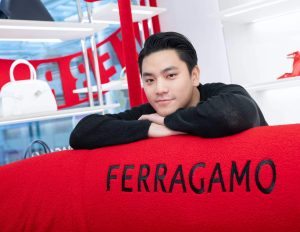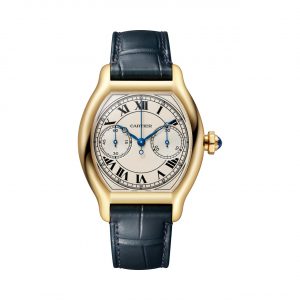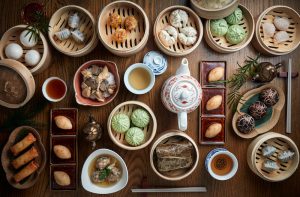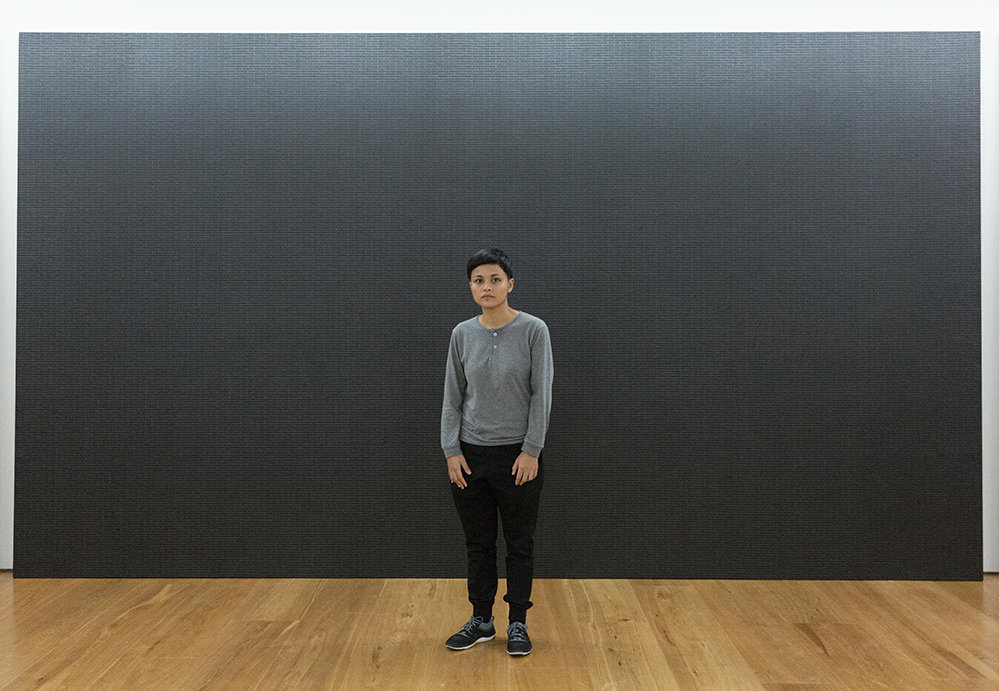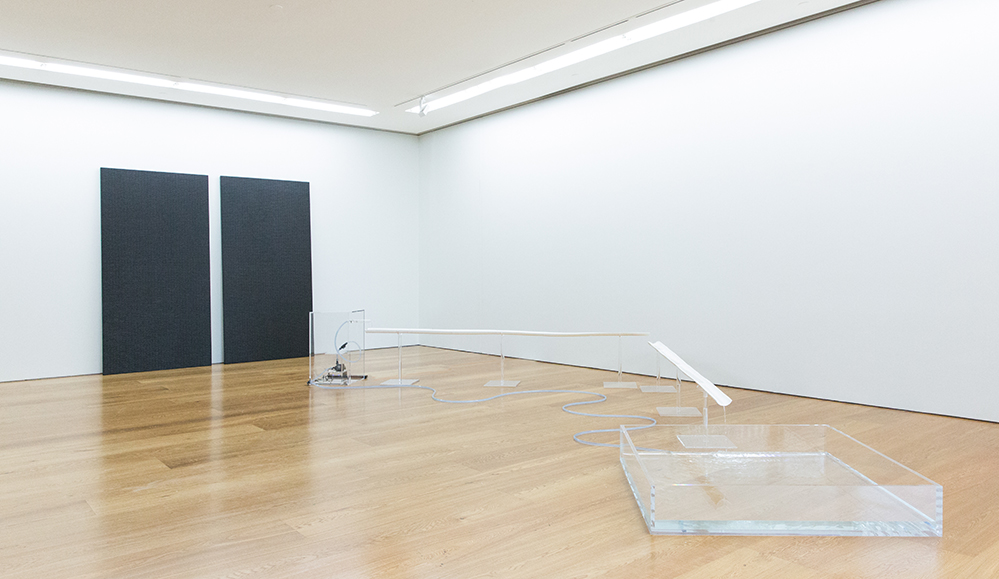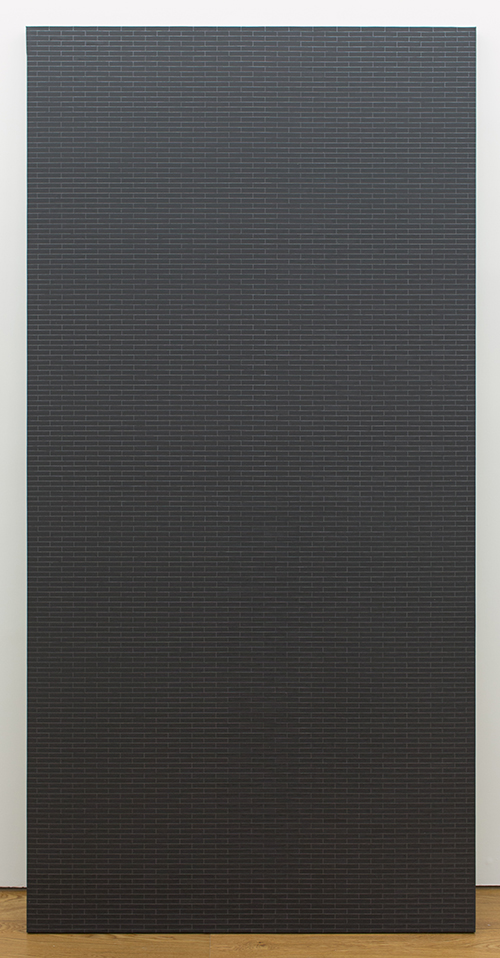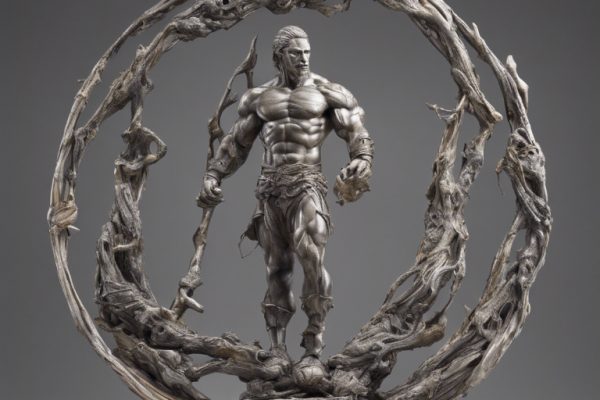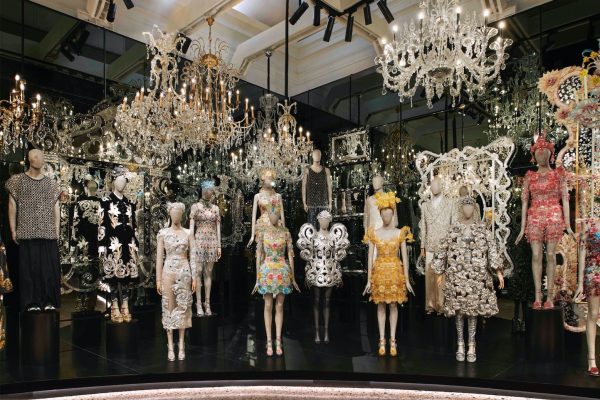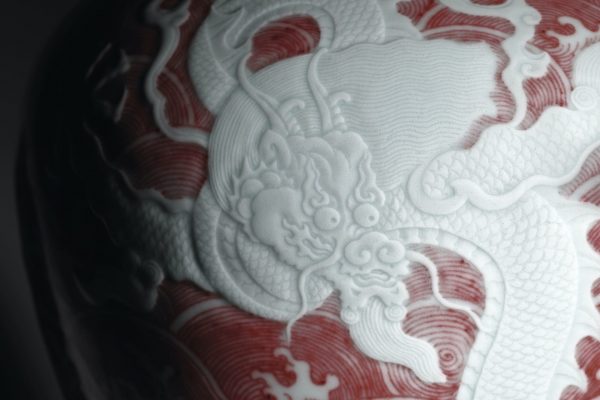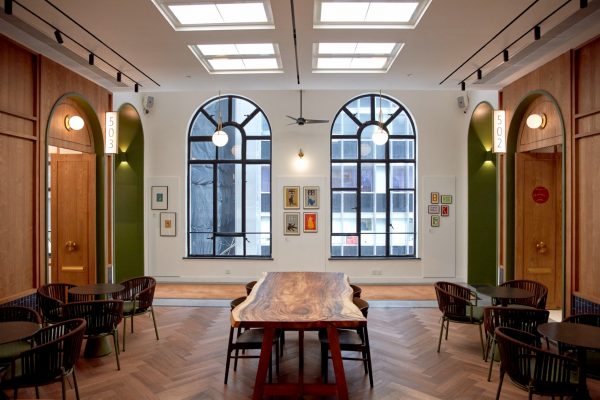Maria Taniguchi was born in Dumaguete City in the Philippines in 1981. She won the Hugo Boss Asia Art Award in 2015 and has exhibited her work at recent shows in Los Angeles and Germany. Her work is held in a number of collections around the world and many of Hong Kong’s art cognoscenti were on hand for the opening of her new show at Galerie Perrotin, her first solo exhibition in the city, in which she’s exhibiting her trademark black brick paintings. #legend spoke with Taniguchi at the opening.
We heard you may be working on another Hong Kong project?
Yes. I’m working on something for Hong Kong next year called Things That Can Happen. It’s a very young independent art space in Sham Shui Po, run by Chantal Wong, who works at the AAA and in collaboration with artist Lee Kit. They established it together. I like the space. It’s like a 1980’s apartment, in Sham Shui Po, and they’ve taken on three levels, and they’ve kept everything including the kitchen.
What will you exhibit?
I don’t know, [laughter] that’s the fun part. I’ll have to do some research and visit the place. I work kind of intuitively.
How important is it to you to be understood through the work you produce?
I like it when people walk into a room and bring in their own ideas. It’s always like push and pull and contributing to a translation.
What the most remarkable compliment anyone ever paid you about your work?
That they understood it! [Laughter].
How user-friendly is your work? How complex or not?
How complex or not? For me it doesn’t matter if someone goes into a room and sees black rectangles, little bricks and comes out of the room thinking black rectangles and little bricks, that’s fine too. Maybe they can sleep on it and maybe tomorrow they will have something to add to this kind of impression. So I’m aware that it takes some time and that’s okay with me because I took a lot of time to develop the practice and I don’t expect people to walk in and see through the years that an artist has been developing.
If you could have a dream dinner with three other artists this evening, alive or dead, who would they be?
First, I’ve just started a book by Henri Lefebvre. He’s a kind of philosopher. It’s one of his last works, Rhythmanalysis, and it’s a work of fiction and obsession. He is concerned or obsessed with making a study of rhythm into a study of science. I would say him, the ghost of Henri Lefebvre. And then me. And then …
They don’t have to be artists. They could be architects.
I’d go for a scientist, someone who works at atomic level. I like looking at materials, marble, clay, so maybe a scientist or geologist. And then maybe I would choose, erm, let’s see. So we have Lefebvre …
I didn’t mean to make it so hard. Sorry. A fashion designer?
Rei Kawakubo, Yohji, Issey Miyake, all so design, artful and material and all love the colour black.
Yeah. Okay. Talking about fashion I’d invite this young fashion designer from the Philippines. His name is CJ Cruz [Carl Jan Cruz] – I was going to wear his clothes tonight but ran out of time, so now I’m stuck in my sportswear. He’s an amazing fashion designer.
What age?
I think he’s 24. Very young, but he did Tokyo Fashion Week very recently. He’s very intelligent.
What do you like about his work?
I think his relationship to the material and to textiles. He is like, a kind of Philippine version of Japanese designers all born in the 50s, like Rei Kawakubo, Issey Miyake and Yohji Yamamoto. So this generation’s sensitivity to geometric form and other things I see in his work and quality.
Your black brick wall is like fifty shades of black. Does the colour change in some way, or the treatment of it?
The quality of light in the room makes a difference. We’re in an amazing gallery with amazing lights. I hear that the lights are the most expensive part of this gallery, [laughter] so we must be able to see well. But it depends very much on whether it’s natural, artificial lighting, the angle at which you see them in the room, and you can see the variants in the process. Each brick is painted individually and the paint mixed individually.
A horribly commercial question, but what about commodification of the black brick wall? Can you do it in different colours, in endless permutations, different brick sizes?
Do you have a good answer?
No. Other than that you could. But would you?
Well, it’s almost counter-intuitive. There are tons of people who’ve been asking me for different colours. Yeah. I work on the brick paintings alone and I have one assistant who helps me stretch the paintings. You know, I have to say, since you’re asking me a horrible question I can give you this horrible statement which is; I can hire 10 or 20 assistants to help me to produce hundreds of variants of this work, but it doesn’t make sense. I also don’t want to share it because I like it. And it’s cheap labour. You could do that. But I won’t.
What’s the craziest question any journalist has asked you since you arrived in Hong Kong?
Your question. The question about the dead people. [Laughter]. It made me sweat a bit.
The singer Prince once said he used to dream music, wake up and then write it down and go back to sleep. Do you, but with art?
It’s so funny that you mention Prince. On the flight from Manila to Hong Kong, about one hour 35 minutes, I was listening to Prince, and Purple Rain on repeat. That’s incredible.
It must be a Chinese ‘dao’ thing – that’s why we love Chinese philosophy. Do you listen to music while you work?
Not as much as I read fiction, novels, or other non-fiction books. I do light reading and somewhat serious reading while working on the brick paintings. But it’s very much like a moment of construction. It’s not like meditation, where you empty your mind.
Who is your favourite author?
I kind of really love the Elena Ferrante series, the Neapolitan Novels. Kind of amazing. I also really love Ballard [JG]. There’s a short story, The Enormous Space, in which at the end a guy decides to leave the outside world behind, leaves his car engine running, goes into his house for two weeks, consumes all the food, then starts to eat his neighbour’s cat, and throughout this time, the room starts to expand, and he gets taller. I found this interesting.
Your favourite historical person?
Who’s yours?
Henry VIII – he feels like glamour a long, long time before mass media. Yours?
Three years ago here in Hong Kong, there was an exhibition of a Qing Emperor, a scholar, I don’t remember his name, but he was a guy who loved to write. I’m very into him. He wrote poetry – he owned a particularly large piece of fungus and his name was inscribed on the fungus. And he wrote poems for rocks, and about his favourite rock in the garden. I like him.
What’s the best question I haven’t asked but which you would ask yourself?
I refuse to answer this question. [Laughter].



